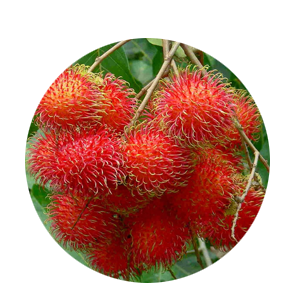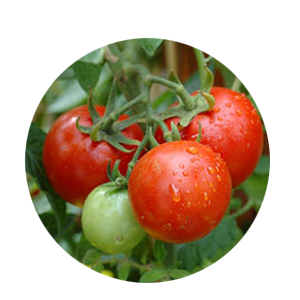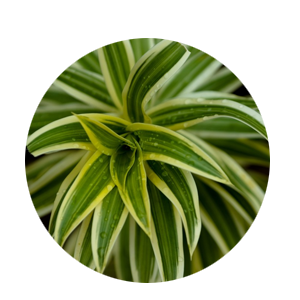Egg Fruit - seedling - (5x7 bag)

Item Description
GENERAL INFORMATION ABOUT A EGG FRUIT TREE The canistel(Pouteria campechiana) is an evergreen tree native to southern Mexico and Central America. Canistel is often referred to colloquially as \"eggfruit\".. When ripe, it is said to have a texture similar to that of a thoroughly cooked egg yolk. The meat of the fruit is sweet and edible raw. The exterior of a canistel fruit is a polished skin that, upon ripening, varies in yellow color and orange tones. Canistel fruit is soft, rather than hard, and it is not mostly juicy. Fruit insides are a few large polished black or dark brown seeds. The canistel grows up to 10 meters (33 ft) high, and produces orange-yellow fruit, also called yellow sapote, up to 7 centimeters long, which are edible raw. The canistel can be eaten out of hand. The ripe fruit has been made into jam, marmalade, pancakes, and flour.The ripe flesh is blended with milk and other ingredients to make a shake, and pureed it is sometimes added to custards or used in making ice cream. HEALTH BENEFITS OF EGG FRUIT TREE As the fruit contains significant levels of minerals with 100 gms of the edible fruit containing about 25 mgs of calcium and about 40 mgs of phosphorus it is a natural remedy for treatment and management of arthritis. The fruit also helps in strengthening of bones in children, the elderly and those suffering from bone and joint related ailments. Some health benefits of canistel fruit 1.Lowering of blood pressure 2.Anti-inflammatory properties 3.Anti-microbial 4. promote skin regeneration 5.Strengthening of bones 6.Cancer disease 7.Treatment of flu and coughs 8.Alleviates allergies 9.Treatment of arthritis
Maintanance, Disease Management And Yielding
MAINTANACE OF THE PLANTATION Once a plantation has been established, the work should not be considered finished. It will be necessary, for example, to protect the plantation against weather, fire, insects and fungi, and animals. A variety of cultural treatments also may be required to meet the purpose of the plantation. FERTILIZING It is recommended that you fertilize at the same time as you water using a time released fertilizer 8-3-9 or similar to help your Canistel Eggfruit Trees grow and produce a substantial crop. These trees are moderate feeders and may require multiple feeding during the growing season. It is important to follow the fertilizers labeled instructions as to not burn or kill the tree. WATERING AND WEED CONTROL Young egg fruit trees should be watered regularly until fully established. In dry western climates, water mature trees deeply at least every one or two weeks. Desert gardeners may have to water more frequently. Mulch the soil around the trees to conserve moisture. Weeding is also very important. Remove all weeds 1.5 meter around the plant. PRUNING AND SHAPE OF TREE Little pruning is required apart from removing overlapping or dead branches or to limit tree size for easier harvesting and spraying. PEST & DISEASE FOR EGG FRUIT TREE Every fruit tree has the future potential for disease and insect damage. Factors such as location and weather will play a part in which issues your tree encounters. If available, disease-resistant trees are the best option for easy care; and for all trees, proper maintenance (such as watering, fertilizing, pruning, spraying, weeding, and fall cleanup) can help keep most insects and diseases at bay. HARVESTING YOUR EGG FRUIT TREE Canistel/egg fruit trees may take 2-4 years to begin flowering and fruiting. With good management, yield can be 40-80kg of fruit/tree. Fruit should be picked with stem attached when fully coloured, and thereafter allowed to ripen for a week when they will become slightly soft to the touch.
- Propogation Method : Seeds & Bulbs
- Plant Climate : Sub Tropical, Normal, Hot, Cool, Tropical
- Plant Height : 1-2 feet
- Plant Weight : 1 Kg
- Plant Polybagsize : 5x7
Related Images
- Botanical Name : Pouteria Campechiana
- Malayalam Name : muttapazham
- English Name : Egg Fruit
Bite into a tasty ripe eggfruit for the first time and you\\\'ll probably be in for a surprise
Planting Instructions
PLANT THE RIGHT TREE AT RIGHT PLACE Growing space both above and below ground should be considered when selecting a tree to plant. Too often allowances are not made for the increased size of the tree when it matures. Most problems can be avoided by selecting the proper tree species for the available planting space. GENERAL TIPS 1. Plant at least 3 meter from main overhead utility wires on street or to your home. 2. Plant at least 3 meter from a building. 3. Plant at leat 1 meter from sidewalks, driveways, patios and fences. 4. Plant at least 6 meter from other large trees. 5. Plant at least 3 meter from small trees. 6. Prioritize your tree planting with the sun’s direction to maximize shade by planting on the southwestern and western sides of your home BASIC PARAMETERS TO PLANT A EGG FRUIT TREE 1.Soil : A well draining soil is of primary importance as Canistel Eggfruit Trees roots do not like to be wet and will rot if allowed to sit in water for extended periods. A mixture of soil, sand and perlite is highly recommended for proper drainage. 2.Planting Distance : For Commercial Plantation:- The planting distance of 6 meter x 6 meter to 8 meter x 8 meter is recommended. This usually accommodates about 160 plants per hectare land. For Home Garden:-In a home garden generally we are planting one or two egg fruit trees along with other species of fruit plants. So it is better to keep minimum 3 meter distance from other plants to plant a egg fruit tree. 3. Pit size : Minimum 60cm width X 60cm Breadth X 60cm depth 4. Sunlight : 100% sunlight is best but can grow up to 50 % shade 5. Watering: During dry weather, initially water the plant once in two days and after one month of planting water every 7 to 10 days during the first year. TEN TIPS FOR PLANTING A EGG FRUIT TREE 1. Dig a hole/pit 3 to 4 times wider than the container (Normally 60cm X 60cm X 60cm is recommended). Fill the pit with top fertile soil to allow for proper root growth. Avoid clay type soil to refill the pit. 2. Add 250 gm Rock Phosphate or Born Meal and 3 to 5 kg Cow dung or compost in the top soil of the pit and mix it thoroughly (Thorough mixing of manure with soil is very important because direct contact of manure with the roots of the plant will cause the damage of roots and plant). 3. Make a small hole in the pit and carefully remove the plant from the container/pot or poly bag keeping the soil around the roots intact. Don‘t yank the plant out of the pot or poly bag as this can separate the roots from the tree. Poly bags can be easily removed by cutting it by a knife and pots can be removed easily by hitting slightly at the top edge of the pot. 4. Set the plant in the middle of the hole. Avoid planting the tree too deep. Keep the base of the trunk is slightly above ground level. Using some soil, secure the tree in a straight position, then fill and firmly pack the hole with the original soil, making sure there aren‘t any air pockets. 5. If the plant is Grafted or Budded make sure the grafted or budded portion of the plant is above the soil. Do not allow to touch the grafted or budded portion in the soil as it burns the skin of the plant. 6. Create a water-holding basin around the pit and give the plant a good watering. After the water has soaked in, spread protective mulch 2–4 inches deep in a 3-foot diameter area around the base of the tree, but not touching the trunk. Also provide a stich as a support for the plant, if needed. 7. The soil and mulch around your plant should be kept moist but not soggy. During dry weather, initially water the plant once in two days and after one month of planting water every 7 to 10 days during the first year. 8. Remove any tags and labels from the tree as these will affect the tree as it grows. You may need to prune any broken or dead branches. For Budded or Grafted plants it is very important that do not allow the growth of off shoots under the grafted/budded portion. Allow the growth of budded/grafted scions only. 9. Do not use chemical fertilizer or any other chemicals on your newly planted trees. Such products will kill your young trees. If needed you can add chemical fertilizers in small quantity (generally below 100gm) after two to three months of planting with sufficient irrigation. 10. Do not over water or allow rain water so much that you see standing water in the pit area of the plant. It will damage the plants roots and results the die of your plant.











